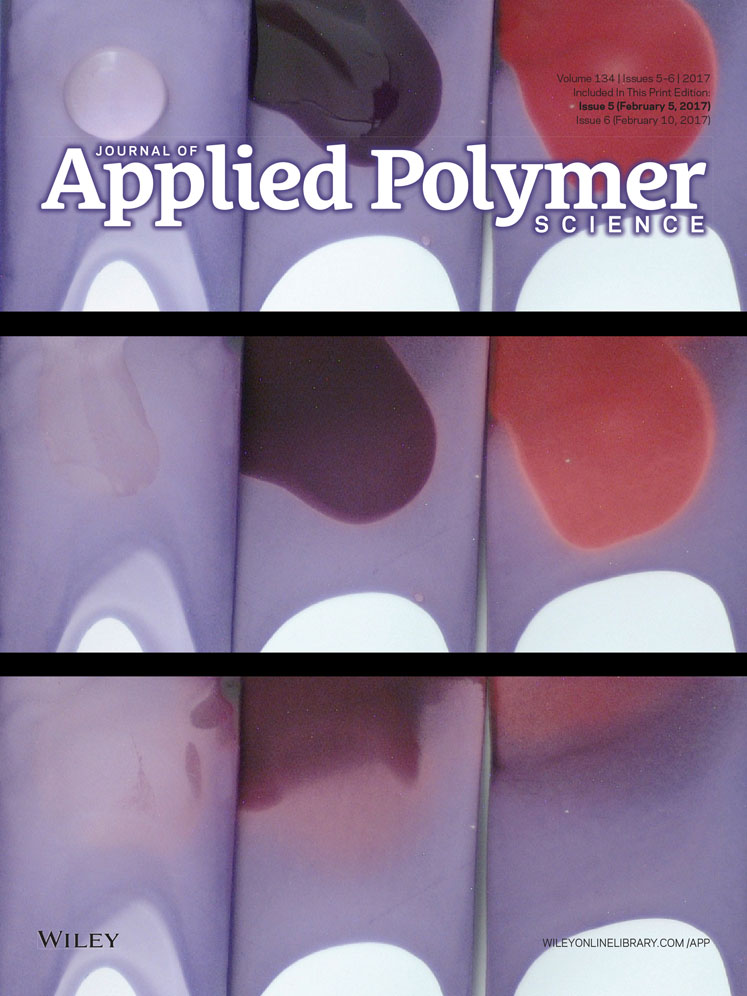CO2-switchable polymeric vesicle-network structure transition induced by a hairpin-line molecular configuration conversion
ABSTRACT
A triblock copolymer, containing a polyethylene glycol (PEG) block and two symmetrical poly(2-(dimethylamino)ethyl methacrylate) (PDM) blocks, was synthesized by using PEG-based macroinitiator with copper-mediated living radical polymerization. The conductivity tests showed that the copolymer exhibited switchable responsiveness to CO2, i.e., a relatively high conductivity of solution can be switched on and off by bubbling and removing of CO2. According to the nuclear magnetic resonance results, the CO2-switchable conductivity variation could be attributed to protonation and deprotonation of tertiary amine groups in PDM blocks. Moreover, at a proper weight concentration 0.5%, the copolymer aqueous solution displayed a CO2-switchable viscosity variation. Scanning electron microscopy, cryogenic transmission electron microscopy, and dynamic light scattering characterization jointly demonstrated that the viscosity variation was the result of a CO2-switchable vesicle-network aggregate structure transition. This structure transition can actually be attributed to a hairpin-line molecular configuration conversion in terms of the reasonable mechanism discussion. © 2016 Wiley Periodicals, Inc. J. Appl. Polym. Sci. 2017, 134, 44417.




